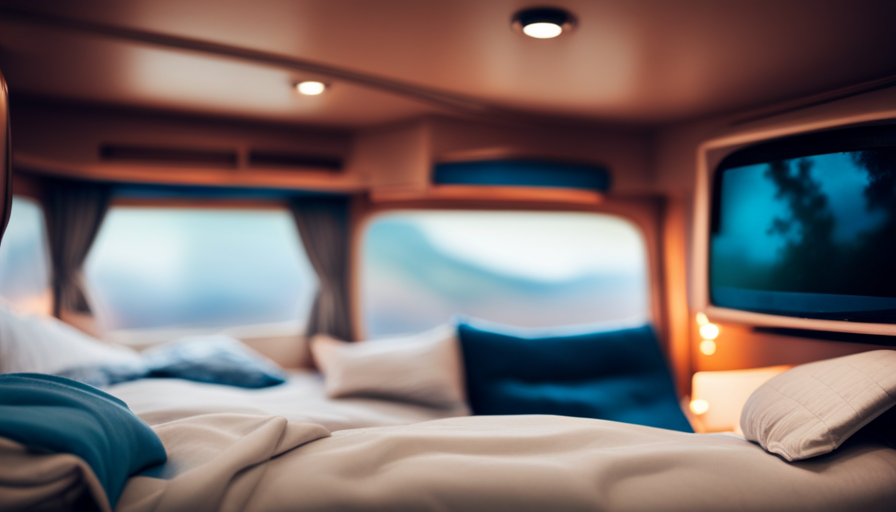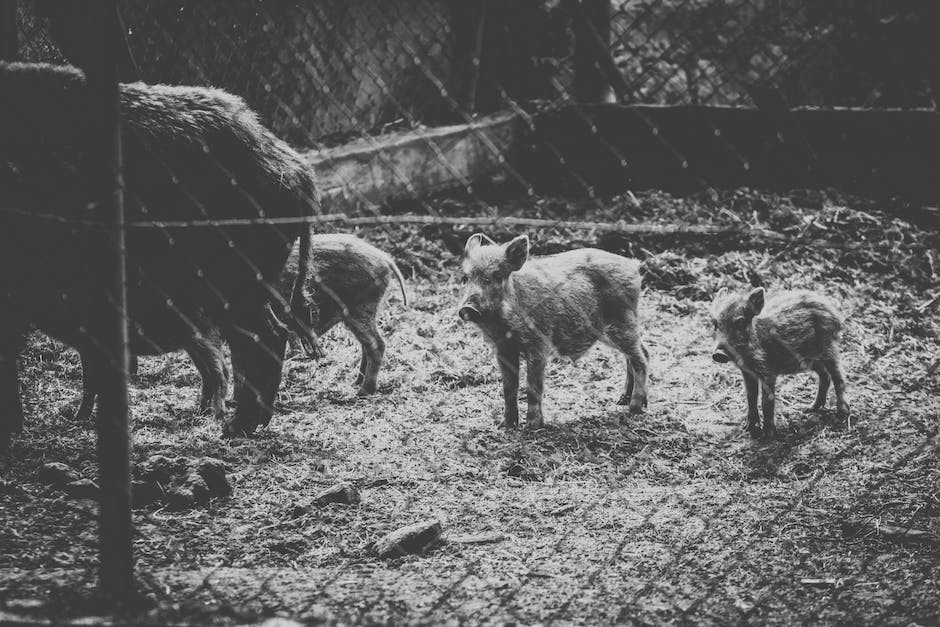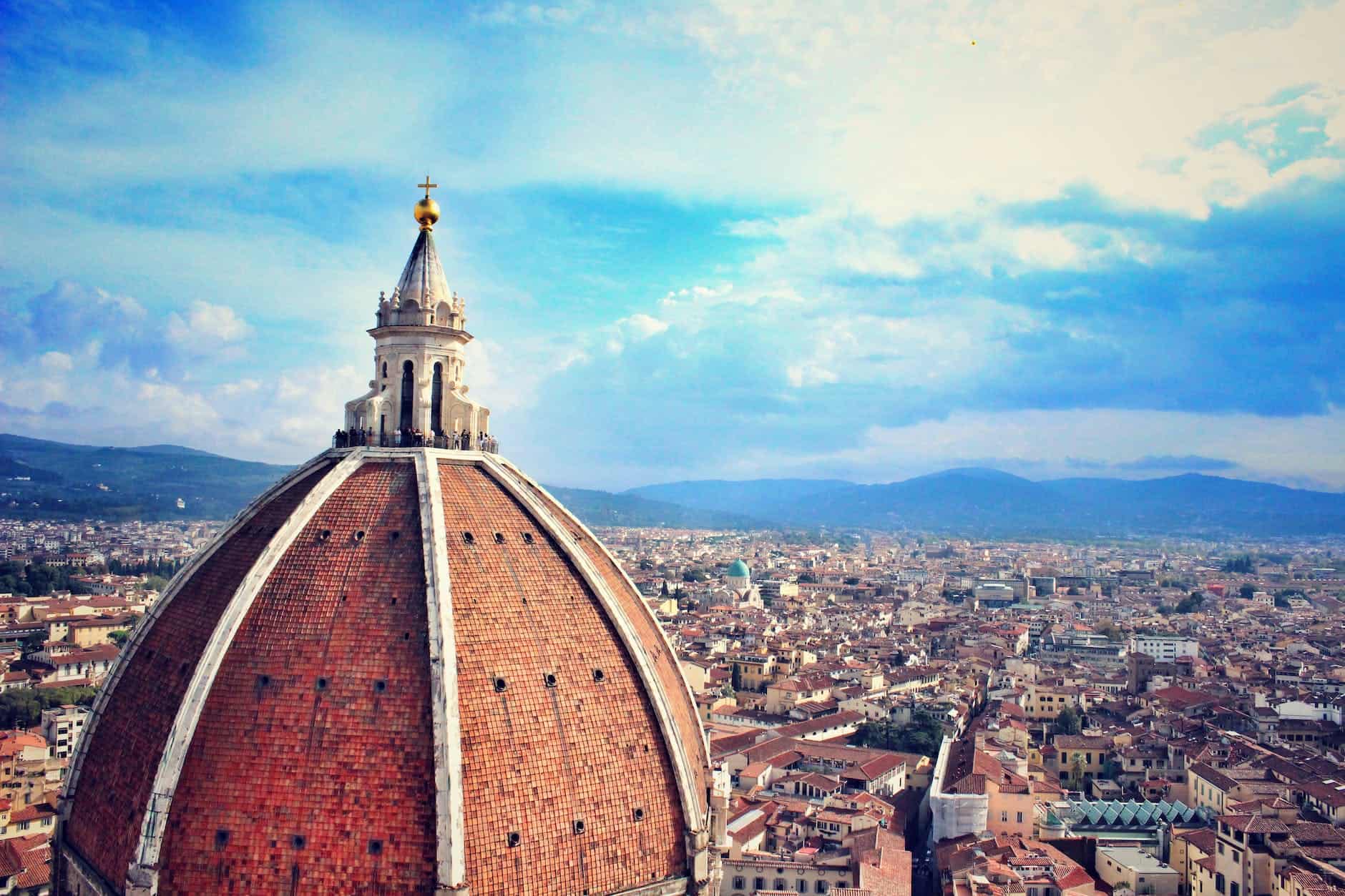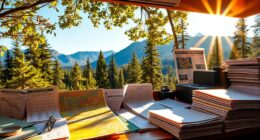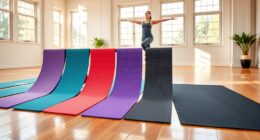You’ve just purchased a used camper and although it has all the essentials for your outdoor excursions, the exterior paint is faded and peeling. You want your camper to look brand new, so what steps do you take?
Well, fear not, because I’m here to guide you through the process of painting the outside of your camper.
In this step-by-step article, I will show you how to transform your camper’s exterior from dull to dazzling. We will start by assessing the condition of the surface and cleaning it thoroughly. Then, we’ll remove any existing paint or decals and repair any damaged areas.
Next, I’ll help you choose the right type of paint for your camper and gather all the necessary supplies.
Once we’re prepared, we’ll apply primer to the surface and then paint your camper using proper techniques. Finally, we’ll seal and protect the freshly painted surface, ensuring that your camper’s new look lasts for many adventures to come.
So, grab your paintbrush and let’s get started on giving your camper a stunning makeover!
Key Takeaways
- Assess the condition of the camper’s exterior before painting, considering signs of damage such as cracks, holes, and rot
- Clean and prep the surface before painting, using necessary cleaning supplies and techniques such as pressure washing, scrubbing, and sanding
- Remove existing paint or decals before painting, using methods such as heating and scraping, and cleaning off residue with adhesive remover or rubbing alcohol
- Choose the right type of paint for the camper’s exterior, considering factors such as oil-based or water-based, glossy or matte finish, and eco-friendly options with low VOC and natural pigments
Assess the Condition of Your Camper’s Exterior
Take a walk around your camper, feeling the rough texture of the weathered siding and noticing the faded colors that once shimmered in the sunlight. Assessing the condition of your camper’s exterior is an important first step before painting.
Start by examining the overall state of the siding. Look for any signs of damage, such as cracks, holes, or areas of rot. Assessing the cost of repair or replacement will help you decide whether to tackle the painting project yourself or seek professional help.
Next, take note of the existing paint. Is it peeling, chipping, or flaking? If so, it will need to be removed before applying a fresh coat. Consider the type of paint currently on your camper and how it will affect the painting process. Some types of paint may require additional steps, such as sanding or priming, for proper adhesion.
If you’re unsure about the extent of the work needed or lack the necessary skills, it might be wise to consult a professional. They can provide an estimate of the cost and guide you through the process. However, if you’re confident in your abilities and want to save some money, painting the camper yourself is a viable option.
With the assessment complete, it’s time to move on to the next step: cleaning and prepping the surface for painting.
Clean and Prep the Surface for Painting
First things first, you’ll want to make sure that your camper’s exterior is sparkling clean and ready for a fresh makeover. Preparing the surface properly is crucial for a successful paint job. To start, gather all the necessary cleaning supplies such as a bucket, sponge, mild detergent, and a hose. Begin by rinsing the entire camper with water to remove any loose dirt or debris. Next, mix the mild detergent with water in the bucket and use the sponge to scrub the surface gently. Pay extra attention to areas with stubborn stains or grime. Rinse off the soap residue thoroughly with the hose, ensuring that no detergent is left behind.
To help you stay organized, here is a table outlining different cleaning techniques you can use:
| Cleaning Technique | Description |
|---|---|
| Pressure Washing | Uses high-pressure water to remove dirt and grime. |
| Scrubbing | Manual scrubbing with a sponge or brush. |
| Chemical Cleaners | Specialty cleaners designed to remove specific stains or marks. |
| Sanding | Uses sandpaper to smooth rough surfaces or remove old paint. |
| Degreasing | Removes grease or oil stains using a degreaser. |
Once the surface is clean and dry, you can move on to the next step of removing any existing paint or decals. This will ensure a smooth and even surface for your new paint job.
Remove Any Existing Paint or Decals
To achieve a fresh canvas for your makeover, start by stripping away any old paint or decals from the surface of your camper. Removing decals can be a bit tricky, but with the right tools and techniques, it can be done effectively.
Begin by using a heat gun or hairdryer to warm up the decals. This will help loosen the adhesive and make it easier to peel them off. Use a plastic scraper or credit card to gently lift the edges of the decal and slowly peel it away. If there’s any residue left behind, you can use adhesive remover or rubbing alcohol to clean it off.
Once you have removed all the decals, it’s time to prepare the surface for painting. This includes sanding the entire exterior of the camper. Start by using a coarse-grit sandpaper to remove any rough areas or peeling paint. Then, switch to a finer-grit sandpaper to smooth out the surface and create a good bonding surface for the new paint. Be sure to sand in a circular motion to avoid creating any noticeable lines or patterns.
After removing the decals and completing the sanding process, it’s important to repair any damaged areas on the camper’s exterior. This may include filling in any dents or cracks with a suitable filler and sanding it down to create a smooth surface. This’ll ensure that your paint job looks professional and lasts for years to come.
Repair Any Damaged Areas
Once you’ve peeled away the old decals and sanded down the surface, it’s time to smooth out any bumps and bruises your trusty road warrior has accumulated along the way. Before you start painting, take a close look at your camper and identify any damaged areas.
Common issues include dents, scratches, and holes. To repair these, you’ll need a few essential tools and materials.
For minor dents, you can use a body filler or putty to fill in the damaged area. Apply the filler with a putty knife, making sure to smooth it out evenly. Allow it to dry completely before sanding it down to a smooth finish.
For larger dents or holes, you may need to use fiberglass repair techniques. This involves applying layers of fiberglass cloth and resin to reinforce the damaged area.
When choosing materials for repairs, make sure they are compatible with your camper’s surface. Consult with a professional or refer to the manufacturer’s recommendations to ensure you’re using the right products.
Once you’ve repaired any damaged areas, you’re ready to move on to the next step: choosing the right type of paint for your camper.
Choose the Right Type of Paint for Your Camper
Before you dive into giving your trusty road warrior a fresh new look, it’s important to choose the perfect coat of color that will make your camper stand out from the crowd.
When it comes to selecting the right type of paint for your camper, there are a few factors to consider. Firstly, you need to decide between oil-based and water-based paints. Oil-based paints are known for their durability and resistance to the elements, making them a popular choice for outdoor applications. On the other hand, water-based paints are easier to clean up and have less odor, making them a more user-friendly option.
Another consideration is the finish of the paint. You can choose between glossy or matte finishes, depending on the look you want to achieve. Glossy paints provide a shiny and reflective surface, while matte paints offer a more subtle and understated appearance.
If you’re environmentally conscious, you may also want to explore eco-friendly paint options for your camper. Look for low VOC (volatile organic compounds) paints, which have fewer harmful emissions. Additionally, consider using natural pigments, which are derived from plants and minerals.
With the right type of paint selected, you can now move on to the exciting step of selecting a color scheme and design for your camper.
Select a Color Scheme and Design for Your Camper
When choosing a color scheme and design for your camper, you’ll want to consider options that exude elegance and sophistication, adding a touch of refinement to your mobile living space.
Start by researching current color trends to ensure your camper has a modern and stylish look. Popular colors for campers include neutrals like white, gray, and beige, as well as bold and vibrant shades like teal, navy, and red.
Once you’ve chosen your base color, you can then incorporate patterns to add visual interest and personality to your camper. Consider using stripes, chevron, or geometric patterns on accent walls or furniture pieces. Another option is to use decals or stencils to create unique designs on the exterior of your camper. Remember to choose patterns that complement your color scheme and create a cohesive look.
Now that you have a clear vision for your camper’s color scheme and design, it’s time to gather the necessary painting supplies.
Gather the Necessary Painting Supplies
Now that you’ve selected a color scheme and design for your camper, it’s time to gather the necessary painting supplies. This step is crucial to ensure that you have everything you need to successfully paint the outside of your camper.
First and foremost, you’ll need to choose the right paint color for your camper. Consider the overall aesthetic you want to achieve and how the color will complement your design. Take into account factors such as the environment where you’ll be using your camper and any regulations or restrictions on colors.
To find inspiration for camper designs, you can browse through magazines, websites, or even take a walk around your neighborhood to see what catches your eye. Look for patterns, colors, and themes that resonate with your personal style.
Once you’ve decided on the color and design, make a list of the supplies you’ll need. This typically includes paint brushes, rollers, paint trays, painter’s tape, sandpaper, and a drop cloth. You may also need a ladder or scaffolding, depending on the height of your camper.
With all the necessary supplies in hand, you’re now ready to move on to the next step: applying primer to the surface. This will ensure that the paint adheres properly and provides a smooth, long-lasting finish.
Apply Primer to the Surface
To kickstart the transformation, grab your primer and get ready to create a lasting foundation for your camper’s new look. Choosing the right primer is crucial for a successful paint job. Look for a primer specifically designed for the material of your camper, whether it’s metal, fiberglass, or wood. This will ensure proper adhesion and durability.
Tips for a smooth application of primer include cleaning the surface thoroughly before starting. Remove any dirt, grease, or old paint to ensure a clean and smooth surface. Use a brush or roller to apply the primer evenly, following the manufacturer’s instructions for drying times and number of coats. It’s essential to allow each coat of primer to dry completely before applying the next one.
Once you’ve applied the primer, you’ll have a solid base for your paint to adhere to. This will help the paint job last longer and look more professional. So, with the primer applied, you’re now ready to move on to the next section and paint your camper using proper techniques to achieve a flawless finish.
Paint Your Camper Using Proper Techniques
Create a stunning and professional appearance for your camper by employing expert techniques in applying a fresh coat of paint. Proper paint preparation is essential for achieving a smooth finish that will last.
Start by thoroughly cleaning the surface of your camper, removing any dirt, grime, or loose paint. Next, sand the entire surface to create a rough texture that’ll help the paint adhere better. Make sure to fill any cracks or holes with an appropriate filler and sand it smooth.
After preparing the surface, apply a coat of high-quality primer to ensure that the paint adheres properly and provides a smooth base for the topcoat.
When it comes to painting your camper, there’re a few tips to keep in mind. First, choose the right type of paint for your camper’s exterior. Look for a paint that’s specifically designed for outdoor use and can withstand the elements. It’s also important to use the proper tools, such as a paint sprayer or roller, to ensure an even application.
Apply the paint in thin, even coats, allowing each coat to dry before applying the next. This’ll help prevent drips and ensure a smooth finish. Finally, seal and protect the painted surface by applying a clear coat or sealant. This’ll help protect the paint from fading and extend its lifespan.
Transitioning into the next section, it’s crucial to seal and protect the painted surface to ensure its longevity.
Seal and Protect the Painted Surface
Ensure your newly painted surface stays vibrant and protected by properly sealing and safeguarding it. One of the best ways to do this is by applying protective coatings. These coatings act as a barrier, shielding your camper’s exterior from the elements and prolonging the life of the paint job. There are various types of protective coatings available on the market, including clear coats, waxes, and sealants. Clear coats provide a glossy finish and offer excellent UV protection, while waxes create a protective layer that repels water and dirt. Sealants are designed to fill in any imperfections and create a smooth, even surface.
To apply these protective coatings, follow these maintenance tips:
-
Clean the painted surface thoroughly using a mild detergent and water. Remove any dirt, grease, or debris.
-
Dry the surface completely before applying the protective coating.
-
Apply the coating evenly using a clean, soft cloth or a foam applicator pad. Work in small sections and make sure to cover the entire surface.
-
Allow the coating to dry according to the manufacturer’s instructions. This usually takes a few hours.
By following these steps and regularly maintaining your camper’s painted surface, you can ensure its longevity and keep it looking vibrant for years to come.
Frequently Asked Questions
How much does it cost to paint the outside of a camper?
The cost of painting the outside of a camper depends on several factors. DIY painting can save money, but it requires time, tools, and skill. Professional painting ensures a high-quality finish, but it can be more expensive.
Factors that affect cost include the size of the camper, the condition of the existing paint, and the type of paint used. It’s important to consider these factors and weigh the costs before making a decision.
Can I paint my camper if it has rust spots?
Yes, you can paint your camper even if it has rust spots. To ensure proper rust prevention, it’s important to address the rust before painting. Start by removing the rust using sandpaper or a wire brush. Then, apply a rust converter to prevent further corrosion.
Once the rust is treated, choose the best paint for campers, such as an automotive or marine-grade paint. Follow the manufacturer’s instructions for application and enjoy your newly painted camper.
Do I need to remove all the existing decals before painting?
To prepare the surface before painting, it’s important to remove all the existing decals. Start by peeling off the decals using a plastic scraper or your fingernails. If any residue remains, use a commercial adhesive remover and a clean cloth to gently wipe it away.
Make sure the surface is clean and dry before proceeding with the painting process. Removing the decals will ensure a smooth and even application of paint.
How long does it take for the paint to dry on a camper?
The drying time of paint on a camper can vary depending on the type of paint used and the painting techniques employed. Generally, it takes around 24 to 48 hours for the paint to dry completely.
It’s crucial to follow the manufacturer’s instructions regarding drying time and curing to ensure a long-lasting finish. Proper ventilation and temperature control can also help expedite the drying process.
Can I use regular house paint for my camper?
Yes, you can use regular house paint for your camper, but there are a few things to consider.
First, make sure the paint is suitable for outdoor use and can withstand the elements.
Second, prepare the surface by cleaning and sanding it to ensure proper adhesion.
Third, apply a primer specifically designed for the type of surface you’re painting.
Finally, use a high-quality brush or roller to apply the paint evenly.
What Steps Should I Follow to Paint the Outside of My Camper?
If you’re looking for a step-by-step painting a camper tutorial, here are the essential steps to follow for the outside of your camper. Firstly, make sure to clean the entire surface thoroughly using soap and water. Next, sand any rough areas gently. Apply a primer coat to create a smooth surface for the paint. Then, choose high-quality exterior paint and apply it evenly using a roller or spray gun. Finally, allow sufficient drying time between coats and finish with a clear sealant.
Conclusion
In conclusion, painting the outside of a camper can give it a fresh and updated look. It’s important to assess the condition of the exterior, clean and prep the surface, and choose the right paint type.
By following the proper techniques and using the necessary supplies, you can achieve a professional-looking finish. Just like a blank canvas waiting to be painted, your camper has the potential to be transformed into a work of art that reflects your personal style and creativity.
So go ahead, grab that paintbrush, and let your imagination run wild!


